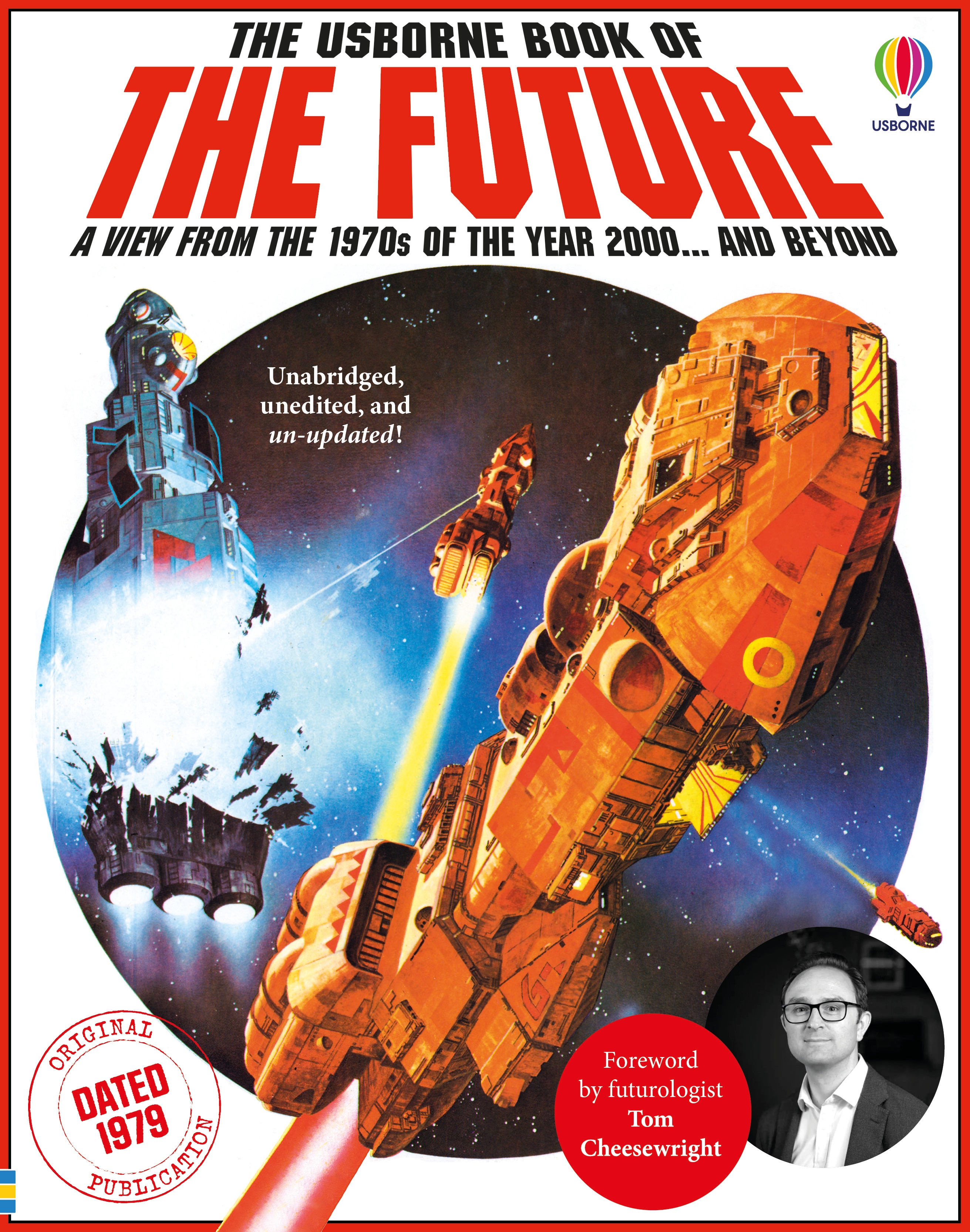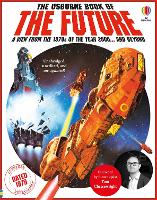Alex Frith is a Managing Editor and writer at Usborne. He was just two years old when Book of the Future was originally published, so he wasn't involved in its creation - but as a fan of the book he has been thrilled to be a part of bringing it back into print for a new generation.
 "Back in 1979, I was two years old, and the Future was a shiny, exciting place full of spaceships, robots and world peace. With Star Wars films dominating cinemas for the next few years, kids of all ages were primed to discover and enjoy Usborne’s chunky hardback Book of the Future. When I found it, later, in my school library, I knew not every detail in the book would come true, but it was so exciting seeing so much possibility, whether it was robots to help around the house, or starships that would take humans to colonies on distant planets. Or even the strange idea of being able to talk to someone on the other side of the world using a video-phone, and sending each other letters through a computer that would print them out.
"Back in 1979, I was two years old, and the Future was a shiny, exciting place full of spaceships, robots and world peace. With Star Wars films dominating cinemas for the next few years, kids of all ages were primed to discover and enjoy Usborne’s chunky hardback Book of the Future. When I found it, later, in my school library, I knew not every detail in the book would come true, but it was so exciting seeing so much possibility, whether it was robots to help around the house, or starships that would take humans to colonies on distant planets. Or even the strange idea of being able to talk to someone on the other side of the world using a video-phone, and sending each other letters through a computer that would print them out.
At some point in my childhood, I felt that the Future shifted from being a place of hope and excitement to a place of fear and danger. Dystopian stories – that tell of a world where evil governments are in charge, or robots have taken over, or the planet lies in ruins – came to rule our screens and our books.
But in the real world, scientists, inventors and engineers never lost their sense of hope, and continued to develop and create marvellous new machines and ideas. Some of them have ended up close to how they were described in the Book of the Future, too: flying cars, towers that float on the water, video-phones and email (although few people print those any more!).
Perhaps the most exciting developments continue to occur in space. The Book of the Future was VERY excited about then-brand new Space Shuttle technology. In fact, those wonderful machines have come and gone since 1979. But our desire to explore space has not dimmed. We’ve built Space Stations where humans live. We’ve designed probes that can land on tiny asteroids. We’ve sent robots to Mars, who report on what they find. Most dramatic of all, a crew of humans is getting ready to visit the Moon for the first time since 1972.
The time is ripe for people to get hopeful about the future again. We know we have a lot to do to keep our planet healthy, but we also have faith that we can do it, through a combination of law-making and clever machine-making. And we’re on the cusp of a big change – perhaps – as we come to terms with the power of Artificial Intelligence in the 2020s. That, too, was covered in the Book of the Future way back in 1979.
And that’s why we’ve chosen to re-issue this classic book here in 2023. As Tom Cheesewright, futurologist, says in his foreword, everything in the book is something that either has happened, or could yet happen – the thing we can’t predict for sure, is when these wonders will come to pass.
It was my job to locate pages from the original book and recreate them as accurately as I could. We haven’t changed any words or images - except to tidy them up. For the first time in over 30 years, this book will now be easy to find and pore over - a real treat for adults like me on a nostalgia trip. But it is at heart a kid’s book. And curious kids of today will still find it a treasure trove of mind-blowing ideas and fantastic pictures. This is not a new book that explains today’s predictions for the Future (that’s coming!). But in fact, much of the Book of the Future still paints an accurate picture of tomorrow’s world, only we’re now thinking it’ll happen more like the Year 2100, rather than 2000.
Perhaps best of all the book is a perfect conversation-starter between parents and children. “Here’s what WE thought the future would be like. What do YOU think?”
.jpg)


.jpg)

Comments (0)
Leave A Reply
You must be logged in to post a comment.